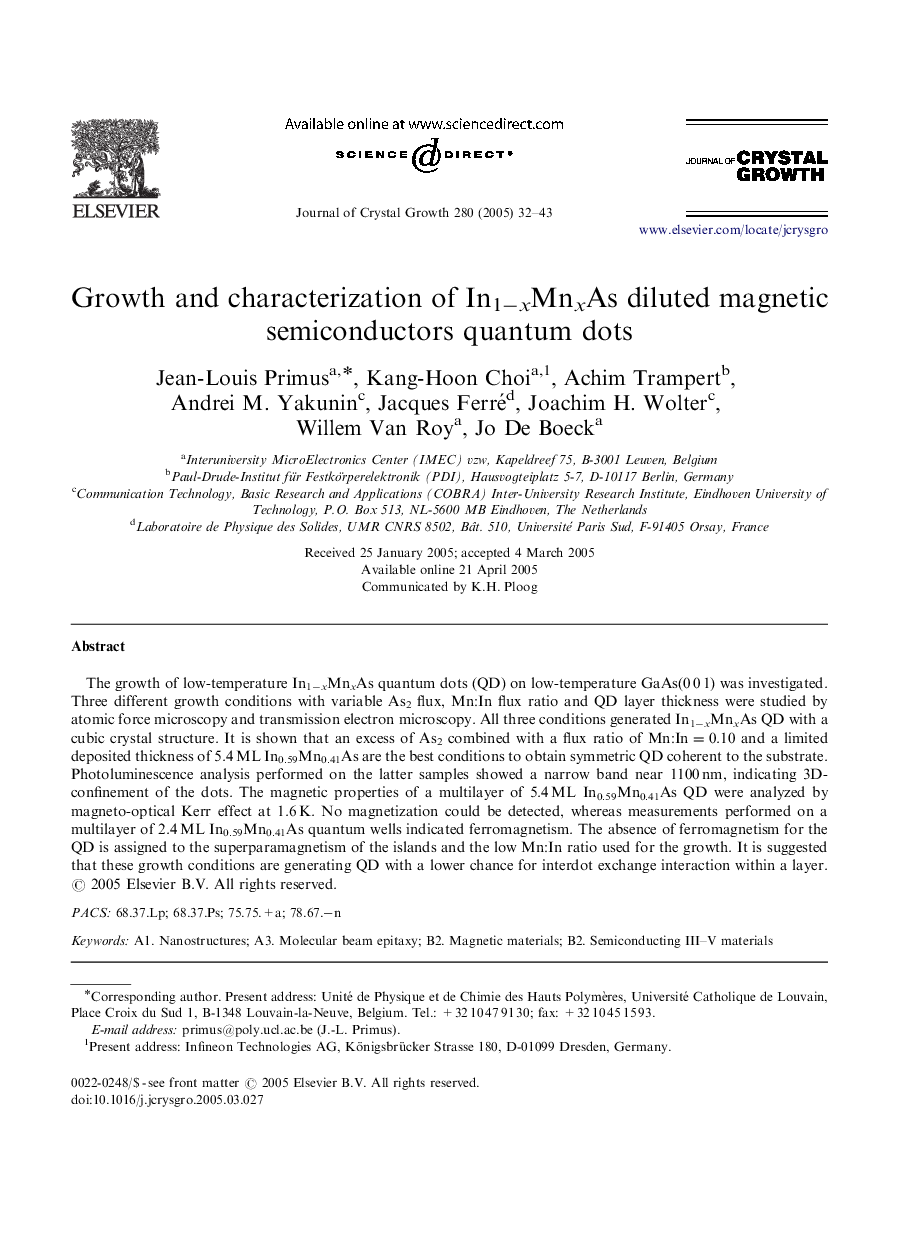| Article ID | Journal | Published Year | Pages | File Type |
|---|---|---|---|---|
| 9829661 | Journal of Crystal Growth | 2005 | 12 Pages |
Abstract
The growth of low-temperature In1âxMnxAs quantum dots (QD) on low-temperature GaAs(0Â 0Â 1) was investigated. Three different growth conditions with variable As2 flux, Mn:In flux ratio and QD layer thickness were studied by atomic force microscopy and transmission electron microscopy. All three conditions generated In1âxMnxAs QD with a cubic crystal structure. It is shown that an excess of As2 combined with a flux ratio of Mn:In=0.10 and a limited deposited thickness of 5.4Â ML In0.59Mn0.41As are the best conditions to obtain symmetric QD coherent to the substrate. Photoluminescence analysis performed on the latter samples showed a narrow band near 1100Â nm, indicating 3D-confinement of the dots. The magnetic properties of a multilayer of 5.4Â ML In0.59Mn0.41As QD were analyzed by magneto-optical Kerr effect at 1.6Â K. No magnetization could be detected, whereas measurements performed on a multilayer of 2.4Â ML In0.59Mn0.41As quantum wells indicated ferromagnetism. The absence of ferromagnetism for the QD is assigned to the superparamagnetism of the islands and the low Mn:In ratio used for the growth. It is suggested that these growth conditions are generating QD with a lower chance for interdot exchange interaction within a layer.
Keywords
Related Topics
Physical Sciences and Engineering
Physics and Astronomy
Condensed Matter Physics
Authors
Jean-Louis Primus, Kang-Hoon Choi, Achim Trampert, Andrei M. Yakunin, Jacques Ferré, Joachim H. Wolter, Willem Van Roy, Jo De Boeck,
